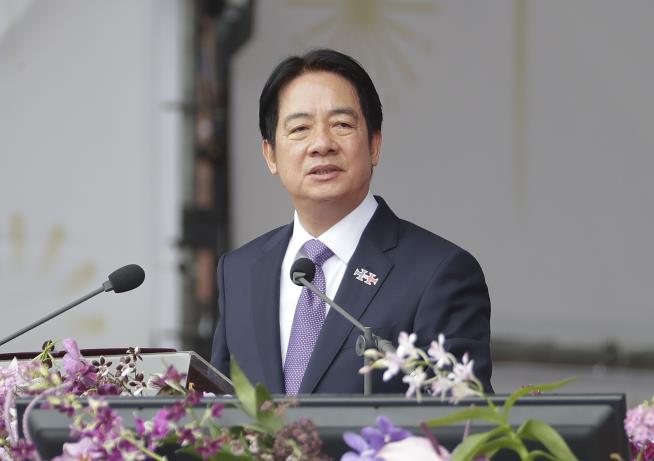China Sets Precedent by Banning Others From Selling Goods to US

In a bold and unprecedented move, China has set a new precedent in global trade by imposing restrictions that ban other countries from selling goods to the United States. This decision has shocked the international community and raised numerous questions about the future of global supply chains, international trade relations, and China’s role as a leading economic power. The development signals a shift in the geopolitical dynamics of trade, with implications for countries around the world.
Background of the Ban
The decision by China to ban the sale of goods to the United States through third-party nations comes at a time when tensions between the two economic giants are at an all-time high. Over the past few years, the U.S. and China have been embroiled in a trade war, characterized by tit-for-tat tariffs, sanctions, and increasingly hostile rhetoric. This conflict has been driven by several factors, including intellectual property theft, technology concerns, and trade imbalances.
The recent move by China to prevent other countries from selling goods to the U.S. further escalates these tensions. Historically, countries with strong trade ties to both China and the U.S. have been able to act as intermediaries in facilitating trade between the two powers. However, with this new policy, China is attempting to tighten its grip on global supply chains and assert more control over its trade relationships.
Reasons Behind the Ban
While the specific details of the ban are still emerging, there are several reasons why China may have decided to take such drastic measures:
- Retaliation for U.S. Policies: One of the primary reasons for China’s actions could be retaliation against what it perceives as unfair trade practices by the U.S. The Trump administration, in particular, has taken a tough stance on China’s trade practices, particularly concerning tariffs on Chinese goods, restrictions on technology companies like Huawei, and accusations of currency manipulation. In response, China may view the ban as a necessary step to level the playing field and push back against what it perceives as aggressive actions by the U.S.
- Strengthening Domestic Industry: China may also be using this ban as a strategy to strengthen its domestic industries. By limiting the flow of foreign goods into the U.S. through third parties, China could be seeking to boost its production capabilities and reduce its reliance on foreign suppliers. This approach would encourage more countries to buy Chinese-made products directly, enhancing China’s position in the global market and its influence over international supply chains.
- Geopolitical Strategy: The ban could also be part of a broader geopolitical strategy to reshape global alliances and trade routes. China has been actively building economic and political partnerships with nations around the world through initiatives such as the Belt and Road Initiative. By taking control of global supply chains and reducing the influence of third-party countries, China may be trying to assert itself as the dominant player in international trade and diminish the influence of traditional allies of the U.S.
- Leveraging Trade Dependencies: Many countries rely heavily on trade with both China and the United States, and China may be using this new policy to exploit this dependency. The global economy is tightly interconnected, and such a bold move by China could create significant pressure on countries that have strong ties to both powers. By cutting off trade with the U.S. through these countries, China could potentially force them to choose sides, giving China more leverage in diplomatic negotiations.
Implications for Global Trade
The ban’s impact will be felt around the world, as it will undoubtedly disrupt global trade patterns and challenge established norms in the international economy. Several key implications are already becoming apparent:
- Disruption of Supply Chains: Many industries rely on complex supply chains that involve multiple countries. For example, a product may be manufactured in China, have components sourced from various countries, and then be sold to the U.S. via a third-party country. With China’s ban in place, these established supply chains could be severely disrupted, forcing companies to find alternative sourcing and distribution channels. This could lead to higher costs for businesses and consumers, as well as delays in the availability of goods.
- Pressure on Third-Party Countries: Nations that have traditionally acted as intermediaries for trade between China and the U.S. will find themselves caught in the middle of this trade dispute. Countries that rely on exports to both China and the U.S., such as Japan, South Korea, and members of the European Union, will need to navigate this new challenge. These nations may be forced to choose between maintaining strong ties with either the U.S. or China, potentially alienating one side in favor of the other. Additionally, countries that try to circumvent the ban could face sanctions or other economic penalties from China.
- Impact on Global Markets: As China moves to tighten control over global trade, the effects on international markets could be far-reaching. The U.S. may face a shortage of certain goods, especially those that are critical to industries like technology, automotive manufacturing, and consumer electronics. Meanwhile, China could benefit from increased demand for its products, as countries look to source goods directly from the Chinese market rather than through intermediaries. However, these shifts could also lead to higher prices and inflationary pressures in both countries.
- Shift in Global Trade Alliances: This new policy could lead to a realignment of global trade alliances. Countries that are heavily dependent on trade with the U.S. may start to reconsider their positions and seek closer ties with China, while others may try to maintain a neutral stance. Over time, these shifting allegiances could lead to the emergence of new trade blocs and economic partnerships, fundamentally altering the global economic landscape.
- Increased Protectionism: China’s decision could signal a broader trend toward protectionism in global trade. With tensions between major economies on the rise, more countries could take steps to prioritize domestic industries and reduce reliance on foreign markets. This could lead to the re-emergence of more insular, nationalistic economic policies, undermining the principles of free trade and global economic integration.
Potential Responses from the U.S.
In response to China’s ban, the U.S. may seek to retaliate by imposing further tariffs, sanctions, or restrictions on Chinese goods. President Biden’s administration may also look to forge stronger trade relationships with countries that have been caught in the middle of the dispute, offering incentives for them to maintain trade routes that circumvent China’s restrictions. Additionally, the U.S. may look to bolster its domestic industries and reduce its reliance on Chinese goods, a move that could have long-term implications for both countries’ economies.
China’s decision to ban others from selling goods to the U.S. is a game-changing move in international trade that will likely have far-reaching consequences for global economies. This policy is part of a broader effort by China to assert more control over its economic and geopolitical future. While the immediate effects are still unfolding, it is clear that this move will disrupt global supply chains, shift trade alliances, and create new challenges for countries and businesses alike. The next steps taken by both the U.S. and the international community will determine how far-reaching China’s influence will become in reshaping the world order.






